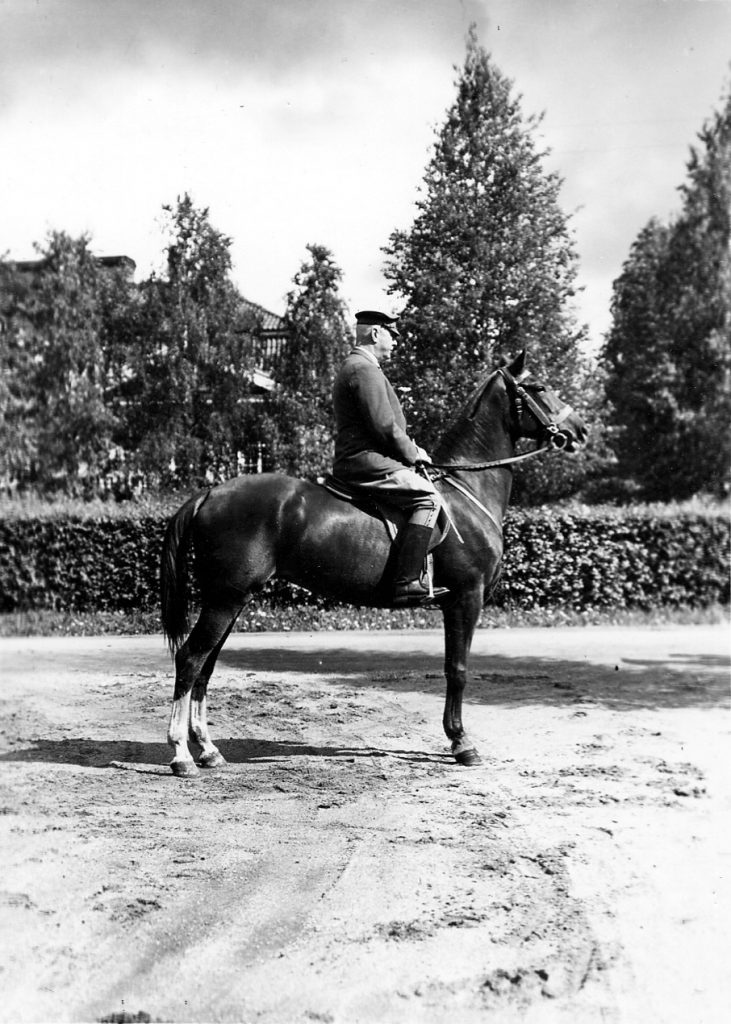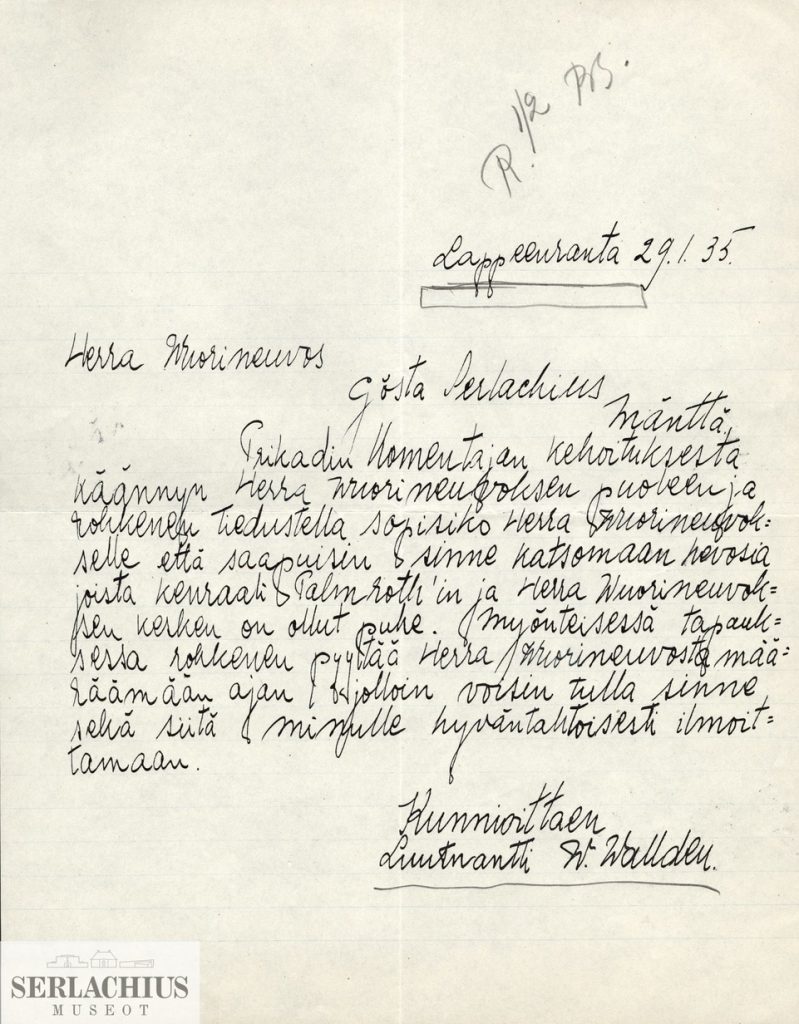The Serlachiuses’ horse Gatti to the Berlin Olympics?
FEBRUARY 2020
In the Archive Collections of the Serlachius Museums you find some of Gösta Serlachius’ correspondence from the 1930ies, letters in which he is asked to send some of his warm-blooded riding horses to be trained for the Nordic Championship in field riding and later on perhaps for the Berlin Olympics.
In the 1930ies, Gösta and Ruth Serlachius bought riding horses from an area which today belongs to Slovakia. The riding instructor Franz Pfleger had received the task and had acquired two mares and one gelding from different breeders. In the autumn of 1933, Pfleger travelled with the horses when they were brought by ship from Lübeck to Helsinki and from there to Mänttä, in transportation boxes made in Mänttä.
The information about the good riding horses that had been brought to Finland reached The Equestrian Federation of Finland, which was assembling a field riding team for Nordiska Ryttarspelen (The Nordic Riding Championship) which was to be held in Oslo in 1935. Field riding is the most challenging and multi-faceted of the different kinds of riding competitions. The horse has to know the movements of dressage, jump over obstacles and, in addition, it has to have the energy required for the heavy terrain obstacle course.
Lieutenant Werner Wallden from the Lappeenranta Cavalry Brigade was willing to participate in the Oslo competitions and later possibly in the Olympic Games, provided he got access to a horse qualified for international competitions. Both Wallden and his superior Major General Palmroth contacted Gösta Serlachius by correspondence and asked him to provide horses for training.
The army didn’t have enough warm-blooded horses qualified for competitions as challenging as these, and another obstacle was the scarcity of resources. “Since it has come to my knowledge that You, Mr Serlachius, are a devoted supporter of the riding sports and that in Your stables You have several noble horses, I am turning to You, Mr Serlachius, in order to ask You whether some of these horses may perhaps not be in Your immediate personal use, so that using the horses in question in a competition could be considered”, Major General Palmroth wrote in November 1934. Gösta Serlachius’ spouse, Ruth Serlachius, was also very keen on horses, and apart from riding she had also personally held the reins in trot competitions.
Gösta Serlachius considered delivering the horses for the training and competitions, “only two of the riding horses in my possession can come into consideration”. Indeed, the black mare called Zita was in Serlachius’ opinion only qualified for obstacle riding, but the chestnut coloured mare Gatti ought to be especially qualified for both speed and obstacle riding competitions. About dressage, Serlachius writes nothing, but perhaps considers that his horses would also develop that skill during the training.
Before he made up his mind, Serlachius wanted to know who would be riding the horses. “Especially Gatti is very shy and sensitive, and under no circumstances do I want her spoiled.” Sundberg, the groom, was attending to the horses, he was very attached to them and took care of them in an excellent way. “I am confident Sundberg will be capable of training the horses given the adequate instructions.”
The training method planned by Serlachius was out of the question. The uniform plan designed by The Equestrian Federation for training the team required a training camp, which was due to be organized in the spring of 1935. Before this, it was necessary to start the competition training as early as possible. The horse should be in Lappeenranta for at least six months, being trained by the person who was to ride it in the competition, and, depending on the success in Oslo, in continued training for the 1936 Berlin Olympics.
“Since the horses would have to be absent for such a long time, my Spouse and I consider we cannot do without them for so long.” Serlachius was also afraid the qualities of the horses would change during the competitions and training, “so that they would no longer be pleasant enough for our purposes.” So Gösta and Ruth Serlachius’s horse never became an international competition horse nor did it visit the Olympics.
The horse of the Serlachius family would not have ended up in bad hands. Werner Wallden (1906–1989) was successful in field riding both in his home country and abroad. He participated in the Nordic Championship in Oslo in 1935 and came third on his horse Bacchus. He also participated in the Berlin Olympics. His book Ratsastuskirja (Riding Book) was published in 1952, and for many years it was the only riding guide written in Finnish.
Helena Hänninen
Curator
Sources:
Simpanen, Marjo-Riitta, Serlachiusten kartano. Joenniemen mallitilasta taidemuseoksi. Serlachius-museot: PARVS, 2019.
Gösta Serlachius’s correspondence. The Serlachius Museums.



